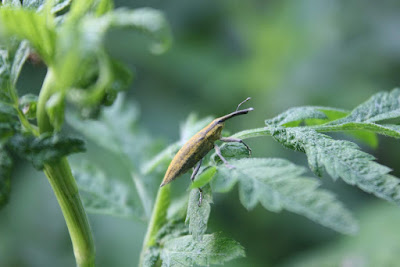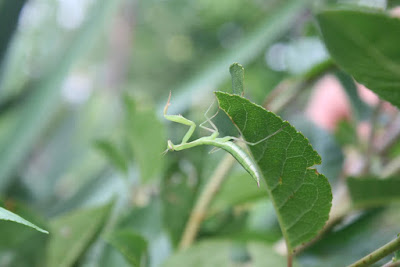Welcome to part 4 of a series where we'll be posting some observations and experiences about the various plant species from our forest gardens and regenerative landscapes, as well as interesting plants and polycultures from around the world. We'll be featuring plants from different layers of the forest garden, presenting some established polycultures, and providing some suggestions about how to design, build and manage forest gardens and regenerative landscapes.
Forest Garden Plants
Lower Canopy Layer - Corylus avellana - Hazelnut are ripening around mid summer. These plants are quite odd in that pollen is released from the male catkins in bursts across a 4- 6 week period in January - March. The pollen germinates as soon as it reaches a receptive flower but the fertilization process does not take place for another 4-5 months in June. Once fertilized the female flowers develop into nuts very rapidly with 90% growth occurring within 4 - 6 weeks.
For more info about growing and caring for Hazel see here The Amazing Hazel - The Essential Guide to Everything you need to know about growing Hazels
Shrub Layer - Vitex agnus-castus - Chaste Tree although called a tree it behaves like a shrub and although generally a full sun plant it grows well in the dappled shade of a large tree with an light canopy such as Gleditsia triacanthos - Honey Locust or Prunus armeniaca - Apricot. The plant has an amazing history medicinally, and has been used for thousands of years for its beneficial effect on the female hormonal system, the seeds being used to restore balance to the female reproductive system.
It's a great plant for xeriscaping being very drought tolerant, an attribute it would have needed to survive in its native range of North Africa and West Asia. Interestingly, this plant forms one of the ingredients of the legendary Moroccan spice mixture 'ras el hanout'.
Although from the warmer regions of the world Vitex agnus-castus - Chaste Tree can tolerate very cold winters down to -20 celsius.
Herb Layer - Levisticum officinale - Lovage is one of our favorite herbs in the forest garden. The flowers attract huge amounts of beneficial pest predators such as parasitic wasps and lacewings, ladybugs, tachinid flies and numerous other flies and bees, especially honey bees.
The plant is a classic culinary herb and the leafy greens will start to appear in early spring, I find the flavor too overwhelming for mixing in salads and stir fries but is a little works ok. The plants will grow a meter + by the beginning of summer when the flowers start to erupt and the flowering period can last up to 4 weeks in some seasons. We'll leave the plants to reach senescence and decompose over the winter as the hollow stems of the plants can make great nesting sites for beneficial invertebrates. When the new leaves appear in the spring we'll cut back last years growth and round we go again.
Ground Layer - Physalis alkekengi - Chinese Lantern can make a great ground cover in the forest garden. In deep shade they will spread slowly but with enough light 4-6 hrs they can spread quickly to form an attractive and dense ground cover. We're using the plant under mature Prunus avium - Sweet Cherry between Rubus fruticosus cv. - Blackberry and a Corylus avellana - Hazelnut that is grown for biomass rather than nuts.
Inside the intricate "lanterns" in late summer/early autumn are little red edible berries the taste of which can vary from sweet to bitter, usually they make an acceptable nibble.
Regenerative Landscape Design - Online Interactive Course
Want to learn how to design, build and manage regenerative landscapes? Join us on our Regenerative Landscape Design - Online Interactive Course. We look forward to providing you with the confidence, inspiration, and opportunity to design, build and manage regenerative landscapes, gardens, and farms that produce food and other resources for humans while enhancing biodiversity.
You can find the course details here and at the moment we have a $350 ( 20%) discount for full enrollment to the course. Just use RLD2024 in the promo code section of the registration form to receive your discount.
Here is a five-layer polyculture we have growing in an open area of our forest garden. This polyculture has been growing well for over 8 years but since the photo was taken 3 years ago, the Spartium junceum - Broom died off following some heavy pruning (I reduced more than half the biomass and the plant did not recover) and the Zanthoxylum piperitum - Japanese Pepper Tree also died and I still have no idea why on that one. We've added a few more plants to the area and replanted the Vitis vinifera cv. - Wine Grape to a more appropriate location.
Polycultures are dynamic and often when you have many plants growing together things can change fast and sometimes it's difficult to work out why they change.
That's all for now !
Support Our Project
If you appreciate the work we are doing you can show your support in several ways.
Become a member of the Bloom Room. A $70 annual or $7 per month subscription to our Substack provides you with access to live sessions, design tutorials, a members forum and more, see details here.
Make a purchase of plants or seeds from our Nursery or Online Store
Joining us for one of our Practical Courses or Online Courses
Comment, like, and share our content on social media.
If you appreciate the work we are doing you can show your support in several ways.
Become a member of the Bloom Room. A $70 annual or $7 per month subscription to our Substack provides you with access to live sessions, design tutorials, a members forum and more, see details here.
Make a purchase of plants or seeds from our Nursery or Online Store
Joining us for one of our Practical Courses or Online Courses
Comment, like, and share our content on social media.


.JPG)

.jpg)



.jpg)
.jpg)




.jpg)


No comments:
Post a Comment